|
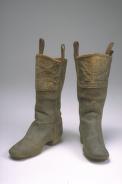
Children's boots
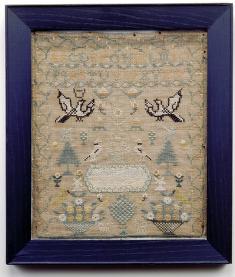
Caroline Stebbins Sheldon (1789-1865) Sampler

"Onion Harvest"

"Thanksgiving Pies"
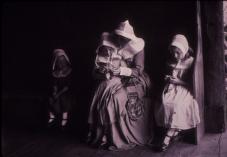
"Learning to Sew"
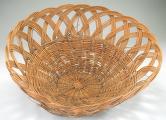
Reed Basket
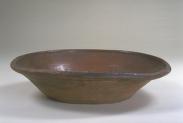
Milk Pan

Two children feeding hens
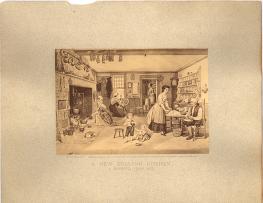
"A New England Kitchen"

Smock

Split Birch Broom
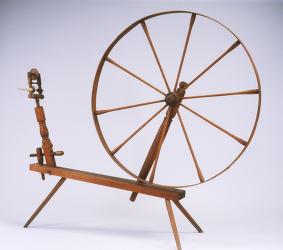
Great Wheel

Bread Peel

Flax Wheel

Manure fork

Onion Shovel
|
Summary and Objective
After doing a read a-loud(s) on early American family life and viewing pictures, students will undertand that children of that time were responsible for many chores that contributed to the family's survival and well-being. These chores played an important role in their education, and often began at an early age. Following the discussion, students will compose a list of "yesterday" chores. These chores could be categorized around the food/kitchen, sewing/clothing, house/cleaning/taking care of younger children, wood/heating (the house), garden/farming/hunting. These chores could be compared/contrasted to "today's" chores that children have.
Teaching Plan
Step 1.
Read story/stories, on early American life, such as "Little House in the Big Woods", or "If you Lived in Colonial Times". Discussion questions might include, "Where does Pa do a lot of his chores?" (outside). "Where does Laura do a most of her chores?" (inside). "Who seems to have the most chores?". "Who seems to have the hardest chores?". Also view downloaded pictures from the digital collection, on the American Centuries website, focusing on children's chores done at that time. (Downloaded pictures have descriptions, for example boots are for work in the barn, taking care of the animals.)
Step 2.
After viewing downloaded pictures, discuss the chores children learned to do, at what age, skills, and tools involved. Also discuss how the chores contributed to the family's well-being. Downloaded pictures include helpful details: boys' boots-for working in the barn tending animals, sampler-girl practicing stitches, immigrant women and child-harvesting onions, 18th-19th kitchen, women & girls-food preparation, reed basket-storage of feather mattresses, milk pan-preparation of butter, feeding chickens-"Why are they barefoot?"(They don't want to ruin their good shoes.), Smock-to protect clothes from messy household choes, broom-cleaning, spinning wheel-wool into yarn, bread peel-remove food from cooking fireplace, flax wheel- spinning flax into linen, manure fork-(boys learned from older male relatives)-cleaning and spreading manure/fertilizer, onion shovel-havesting onions
Step 3.
Compose a list of chores. They could then be categorized around "inside" and "outside chores" in areas of: food/kitchen, sewing/clothing, house/cleaning/taking care of younger children, wood/heating, garden/farming/hunting.
Step 4.
Add an additional column to contrast "today's" chores that children might have. Compare & Contrast chores of "today" to those of "yesterday". For example: children made feather beds, stuffing feathers into linen cases. Today families usually buy comforters/blankets. Yet, we still straighten sheets and tuck in sheets. Discuss what generalizations could be drawn in comparing chores of "yesterday" to chores of "today". "Are chores harder or easier?" "Are chores for boys different than for girls?" "Why might that be?" (not becoming for girls)
Step 5.
Optional:An additional area to contrast would be the chores of the classroom of "yesterday" to today's classroom chores.
|




